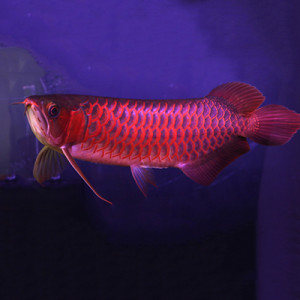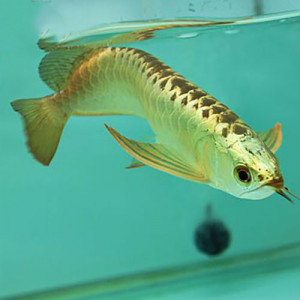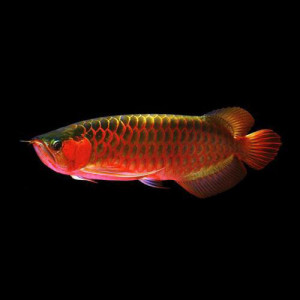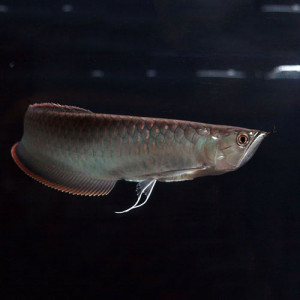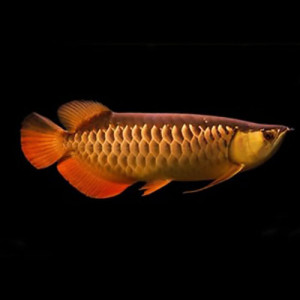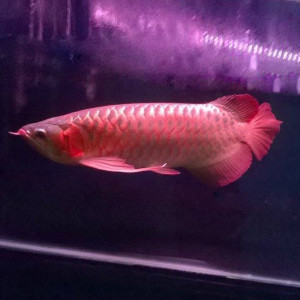Blood red arowana
$550.00 – $1,900.00
Red Arowana, also known as the “dragon fish,” is a captivating species that has long captured the fascination of fish enthusiasts and collectors worldwide. With its vibrant red scales, elegant elongated body, and graceful movements, the Red Arowana stands out as a symbol of wealth, prosperity, and luck in various cultures. In this article, we delve into the world of the Red Arowana, exploring its physical characteristics, cultural significance, conservation status, breeding practices, legal restrictions, and the myths and legends that surround this majestic fish species. Join us on a journey to uncover the mysteries and wonders of the Red Arowana.
Blood red arowana
Red Arowana, also known as the “dragon fish,” is a captivating species that has long captured the fascination of fish enthusiasts and collectors worldwide. With its vibrant red scales, elegant elongated body, and graceful movements, the Red Arowana stands out as a symbol of wealth, prosperity, and luck in various cultures. In this article, we delve into the world of the Red Arowana, exploring its physical characteristics, cultural significance, conservation status, breeding practices, legal restrictions, and the myths and legends that surround this majestic fish species. Join us on a journey to uncover the mysteries and wonders of the Red Arowana.
Blood red arowana fish

Blood red arowana fish color genetics
When it comes to red Arowana fish color genetics, things can get pretty interesting. These stunning creatures with thier vibrant red, which is actually a result of selective breeding efforts to enhance this specific color trait.
The genetic makeup of the fish determines whether they will display this striking coloration or not. It’s all about the expression of certain genes that control pigmentation in the scales. This means that breeders carefully choose parents with desirable traits to produce offspring with the best chances of inheriting and showcasing that beautiful red color.
It’s a fascinating process that showcases how human intervention can lead to some truly awe-inspiring results in the world of aquaculture. If you’re looking to add a pop of color to your aquarium, a red Arowana might just be the perfect choice!
Blood red arowana fish species
Arowanas are like the rockstars of the fish world, known for their majestic appearance and commanding presence. These freshwater beauties belong to the Osteoglossidae family and thet are super jumpers, so don’t be surprised if they startle you with their acrobatic skills!
Distinctive features of the red arowana
The Red Arowana, also known as the Dragon Fish, is the Ferrari of the arowana world. Its striking red scales shimmer like a ruby under the right lighting, making it a prized possession among fish enthusiasts. With a sleek body and elegant fins, this fish is the epitome of aquatic elegance.
Physical appearance of the red arowana
Picture this: a long, sleek body adorned with scales that are the envy of any jewelry store. The Red Arowana’s fins flow gracefully in the water, giving it a regal aura that demands attention. Its distinctive coloration sets it apart from other arowana species, making it a coveted addition to any aquarium.
Natural habitat and distribution
In the wild, Red Arowanas can be found slinking through the waters of South America, particularly in the Amazon River basin. These fish prefer slow-moving waters with plenty of vegetation to hide among. Unfortunately, due to habitat destruction and overfishing, their populations in the wild are under threat.
Cultural significance and symbolism of blood red arowana
Symbolism in different cultures
Across various cultures, the Red Arowana symbolizes prosperity, wealth, and good fortune. In Chinese culture, it is believed to bring luck and abundance to its owner, making it a popular choice for businesses and households looking to attract positive energy.
Role in feng shui and luck
Feng Shui enthusiasts swear by the Red Arowana’s ability to invite wealth and prosperity into their lives. Placing this majestic fish in specific areas of your home or office is believed to enhance positive energy flow and bring financial success. Plus, let’s be real, having a Red Arowana swimming gracefully in your space just looks downright cool.
Conservation status and arowana threats
Threats to the red arowana population
Despite its cultural significance and popularity in the aquarium trade, the Red Arowana faces numerous threats in the wild. Habitat loss, pollution, and overfishing have taken a toll on their populations, pushing them towards the endangered species list.
Conservation efforts to protect the species
To safeguard the future of the Red Arowana, conservation efforts are underway to protect their habitats and regulate their trade. Breeding programs and strict regulations on their international trade aim to ensure that this iconic fish continues to grace our waters for generations to come. So let’s all do our part to help these majestic creatures thrive in their natural environment!
Breeding Practices for Red Arowanas
Breeding red arowanas in captivity can be a challenging yet rewarding experience. To encourage breeding, it is essential to provide a suitable environment that mimics their natural habitat. This includes maintaining clean water conditions, ample space for the fish to move freely, and a diverse diet to ensure optimal health and reproductive success. Additionally, some breeders utilize hormonal injections to induce spawning in red arowanas. However, this method should be approached with caution and preferably under the guidance of a professional.
Care Tips for Keeping Red Arowanas in Captivity
Keeping red arowanas healthy and thriving in captivity requires diligent care and attention to detail. These majestic fish can grow quite large, so it is crucial to provide a spacious tank with adequate filtration and regular water changes. Red arowanas are carnivorous and should be fed a varied diet consisting of high-quality pellets, live or frozen foods such as shrimp and insects. Monitoring water parameters such as temperature, pH, and ammonia levels is also essential to ensure a stable and healthy environment for your red arowana.
Legal Restrictions and Regulations
International Laws and regulations about Blood Red Arowana
The red arowana (Scleropages formosus) is a highly sought-after species, leading to significant conservation concerns and strict regulations on its trade and ownership. Many countries have laws in place to protect this species due to its endangered status in the wild. It is crucial to research and understand the legal requirements surrounding the ownership and trade of red arowanas in your region to avoid any legal repercussions.
Also the Importance of CITES Listing
The Convention on International Trade in Endangered Species of Wild Fauna and Flora (CITES) lists the red arowana as a protected species, highlighting the need for sustainable practices in its trade and conservation. CITES regulates the international trade of red arowanas by issuing permits and monitoring the commercial transactions involving this species. Abiding by CITES regulations is essential to ensure the long-term survival of red arowanas in the wild and prevent illegal trafficking.
What arowanas are legal in the us
In the United States, owning an arowana can be a bit tricky due to strict regulations on endangered species. The three main types of arowanas that are legally allowed in the US are the Silver Arowana, Black Arowana, and Australian Pearl Arowana. These beautiful and majestic fish are popular among aquarium enthusiasts for their unique colors and graceful swimming patterns.
However, it’s important to note that these fish can be quite expensive to purchase and maintain, as they require large tanks with plenty of space to swim and thrive. Additionally, owners must ensure they are acquiring their arowanas from reputable sources that adhere to legal guidelines and ethical practices to protect wild populations of this endangered species.
Myths and Legends Surrounding the blood red arowana
Folklore and Superstitions.
The red arowana holds a special place in the folklore and superstitions of various cultures, particularly in Southeast Asia. the belief that it brings good luck, prosperity, and ward off evil spirits. Some cultures consider owning a red arowana as a symbol of wealth and success, leading to a high demand for this species in the ornamental fish trade.
Mythical Stories Related to Red Arowanas
Throughout history, the red arowana has been the subject of many mythical stories and legends. From tales of mystical powers to legendary guardians of rivers and waterways, the red arowana’s majestic appearance and behavior have inspired awe and reverence in different cultures.
However, these mythical stories not only add to the allure of the red arowana but also highlight the deep cultural significance attached to this magnificent fish.In conclusion, the Red Arowana continues to enchant and inspire awe with its beauty, symbolism, and unique qualities.
As efforts are made to conserve and protect this species, it serves as a reminder of the delicate balance between human fascination and the preservation of our natural world. Whether admired for its elegance in captivity or revered for its mythical significance in folklore, the Red Arowana remains a cherished symbol of prosperity and cultural heritage. Explore the depths of the Red Arowana’s world, and discover the magic that this remarkable fish brings to our lives.
Can red arowanas be kept in a home aquarium?
Yes, Red Arowanas can be kept in large home aquariums, but they require spacious tanks with adequate water quality, proper filtration, and a diet that meets their nutritional needs. It’s essential to research and understand their care requirements before considering them as pets.
Are red arowanas endangered species?
Yes, Red Arowanas are considered endangered in their natural habitats due to habitat loss, overfishing, and illegal poaching. Various conservation efforts are in place to protect and preserve these iconic fish species.
How can I maintain optimal water quality in the arowana habitat?
However, to keep your arowana healthy, it is important to maintain optimal water quality by performing regular 20% water changes every week.
In addition, having an effective filtration system in place, monitoring water parameters diligently, feeding your arowana properly to avoid waste. Keeping the tank clean is important
Blood red arowana price
Think about the blood red arowana price. These beautiful and mesmerizing fish are highly in demand by arowana enthusiasts around the world. Due to their striking appearance and symbol it represent that is good luck and properties in some cultures.
However, owning one of these stunning creatures comes with cost. On average, a young red arowana can cost anywhere from $600 to $3500 depending on factors such as size, coloration, varies types and breeding lineage.
But if you’re looking for a particularly rare or exceptional specimen involves money. It wont cost less than $10,000 or more.
Consequently, the high price is mainly due to their scarcity in the wild and strict regulations on their trade to protect them from extinction. So if you’re thinking of adding a red arowana to your collection, be ready to splash out some serious cash!
Blood red arowana price as to cichlids
Now, red arowanas are stunning coloration and unique features, making them one of the most expensive aquarium fish in the world. Due to their rarity and beauty, red arowanas can come with a heavy price tag ranging from hundreds to even thousands of dollars. On the other hand, cichlids are another popular type of freshwater fish that come in a wide variety of colors and sizes, but generally come at a more affordable price point comparing to red arowanas. While cichlids can still be on the pricier side depending on the specific species and size, they are usually more budget-friendly than their extravagant red arowana counterparts. So if you’re looking to add some vibrant colors to your aquarium without breaking the bank, cichlids might be the way to go!
Blood red arowana price on a baby
The pricing of baby arowana fish will be different from that of adults and note that different vendors only mean different price tag. The size will also determine the amount in which you will be charged. From a $100 you can be able to find a baby of about 2inches. Blood red arowana price in the online market will always have differences.
Blood red arowana price preview from 2015 to 2024
So, if we’re talking about the price of arowana fish between 2015 and 2024, it’s been quite the rollercoaster ride. Back in 2015, the prices were already pretty high due to their rarity and popularity among fish enthusiasts. However, as time went on, factors like supply and demand, regulations on wild-caught specimens, and breeding advancements all influenced the market prices. Prices fluctuated over the years but generally trended upwards due to increased demand from collectors in Asia and other parts of the world. By 2024, you can expect to see arowana prices potentially hitting new highs as these stunning fish continue to capture the hearts of aquarium hobbyists everywhere. Just be prepared to dish out some serious cash if you want to add one of these beauties to your collection!

blood red arowana price display in SHOP, 7inches, 10inches, 15inches and 20inches {$550, $700, $1300 $1900}. Comparing to previous years the prices in the business industries is factorised. Blood red arowana price is on a constant fluctuation.
It is important to note that blood red arowana price varies from breeders to retailers.
Red arowana for sale
Red Arowana, renowned for its striking beauty and cultural significance, commands high prices in the exotic fish market. Understanding the factors that influence the pricing of Red Arowana is essential for enthusiasts, breeders, and conservationists alike.
Additionally, from biological and environmental considerations to market dynamics and legal restrictions. A myriad of factors play an important role in determining the value of these majestic creatures. This information factors on the price of Red Arowana. Prices on the online space of arowana depends on genetics, market forces, regulations. Blood red arowana for sale in our online store.
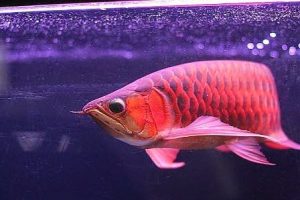
Consequently, the global market demand for Red Arowana continues to rise. Because fo the growing interest in ornamental fishkeeping and the symbolism. blood red arowana for sale
Red arowana for sale in the market is a key factor determining its price. Red arowana for sale has a rapid scarcity in the wild. It is simple because of overfishing and mass destruction by collectors and enthusiasts. Infact, the unique characteristics and limited availability of certain varieties further contribute to their high prices.
Red arowana for sale online, home delivery. Prosessing all orders to various locations in a very secured box. Red arowana for sale influence by a complex interplay of legal regulations, rarity, aesthetics, and economic factors. blood red arowana for sale
Red arowana for sale in some countries is needs some special documents which give you the permission. blood red arowana for sale
Blood red arowana for sale
What arowanas eat
So, being the fiery little predators they are, red arowanas have a pretty specific diet. Consequently helping them maintain their vibrant colors and robust health. These guys are carnivores in nature, so their menu primarily consists of live foods. Such as insects, small fish, shrimp, and even small rodents.
Frozen or freeze-dried variations of these critters can also be offered as a treat. To keep things interesting for them (and make sure they’re getting all the necessary nutrients), it’s a good idea to rotate their diet periodically. Blood red arowana price for a secured delivery.
They’ve got big appetites, so feeding them about three times a day with appropriately-sized portions is key to keeping them happy and healthy. Remember to keep an eye on water quality too; cleaner water means healthier fish! Blood red arowana for sale online.
Can arowana live in cold water
Arowanas are tropical freshwater fish that require warmer water temperatures to thrive. In their natural habitat, they are traceable in warm waters around Southeast Asia. These stunning fish are regonizable for their vibrant colors and unique scales, making them popular choices for aquarium enthusiasts. However, arowanas cannot survive in cold water as it would be detrimental to their health. Cold temperatures can slow down their metabolism, suppress their immune system, and even lead to sickness or death. It is important to maintain the proper water temperature of around 75-82 degrees Fahrenheit for arowanas to ensure they stay healthy and happy in your aquarium. So if you’re considering keeping an arowana as a pet, make sure you provide them with the warm environment they need to thrive.
Can arowana be eaten
While some people consider eating arowana fish as a delicacy, it is important to note that they are protected species. They are under protection in many countries due to overfishing and habitat loss. Additionally, arowanas carry high levels of mercury and other pollutants due to their position at the top of the food chain. This can make them unsafe for consumption, especially for pregnant women and young children. It is always best to err on the side of caution when it comes to consuming exotic or danger species. If you are curious about trying a new type of fish, there are plenty of sustainable options available that are not at risk of endangerment. So while eating arowana may be possible in some regions, it is always important to research and understand the potential risks before indulging in this controversial meal choice.
Can 2 arowana live together
Arowanas are territorial fish and can be quite aggressive towards each other, especially if they are of the same or similar size. Keeping two arowanas together in the same tank is not recommended unless you have a very large aquarium with plenty of hiding spots and territories for each fish to claim as their own. Even then, there is no guarantee that they will coexist peacefully. It’s best to keep a single arowana per tank to prevent any potential conflicts or injuries. If you do decide to keep multiple arowanas together, it’s important to closely monitor their behavior and be prepared to separate them if necessary. Additionally, having multiple arowanas can increase the risk of stress and disease among the fish, so it’s important to consider all factors before attempting to house them together.
Can Arowanas Live With Oscars
Arowanas and Oscars are both popular choices for aquarium enthusiasts, but can they actually coexist peacefully in the same tank?. While it is technically possible for Arowanas and Oscars to live together, it is not generally advisable. Blood red arowana fish online sales.
Arowanas are known for their aggressive nature and territorial behavior, which can lead to potential conflict with the more passive Oscars. Additionally, Arowanas are typically larger in size than Oscars and may view them as prey, leading to potential bullying or even injury.
It is important to consider the specific needs and behaviors of each fish species before attempting to house them together. Overall, it is best to provide separate tanks for Arowanas and Oscars to ensure their health and well-being.
Can arowana live with cichlids
While it is technically possible for arowana to live with cichlids, it is not advisable due to the vast differences in their habitat and behavior needs. Arowana require large tanks with plenty of swimming space and are known to be aggressive towards other fish, especially those that are smaller or have flashy colors like many cichlids. Additionally, arowanas are jumpers, so having tight fitting lids on their tanks is crucial to prevent them from escaping. Cichlids, on the other hand, come in many different species with varying levels of aggression and territorial behaviors that may clash with the arowana’s personality. In general, it is always best to keep fish species that have similar requirements in the same tank to ensure the health and well-being of all the aquatic inhabitants.
Can arowana live with discus
Arowanas and discus fish are both popular choices for aquarium enthusiasts due to their vibrant colors and unique appearances. While arowanas are large in size and have aggressive tendencies, discus fish are more peaceful and social creatures. It is not allowed to keep arowanas with discus fish. This is because arowana’s predatory nature could pose a threat to the more delicate discus. Arowanas may see the discus as potential prey and attempt to hunt them. This will cause stress and potential injury to the discus. Additionally, arowanas require larger tanks with plenty of room to swim and thrive, whereas discus prefer densely plant tanks with calm waters. Ultimately, it is best to keep these two species separate in order to ensure the health and safety of both fish.
Can arowana live with flowerhorn
Although it is possible for arowana and flowerhorn to live together in the same tank, there are several factors to consider before attempting this. Both species can be aggressive and territorial, so providing enough space and hiding spots is crucial to avoid conflict. Arowanas by nature can jump, so a secure lid on the tank is very necessary to prevent escape. Additionally, both fish have specific dietary needs that must be met in order for them to thrive. Arowana typically require live foods such as insects or small fish, while flowerhorns may need a high-protein diet. It’s important to monitor their behavior closely after introducing them to ensure they are getting along peacefully. Overall, with proper care and consideration, arowana and flowerhorn can coexist in the same tank successfully.
Can Arowanas Live With Angelfish
Arowanas and angelfish are two popular species of freshwater fish that have different care requirements but can potentially coexist in the same aquarium. Arowanas are aggressive in nature and also large in size.
Consequently, it is important to provide them with enough space and hiding spots. Also this is to prevent any potential conflicts with angelfish, which are smaller and more peaceful. It’s crucial to monitor the behavior of both species closely to ensure they are getting along and not displaying any signs of aggression. Blood red arowana price is slightly negotiable with some vendors.
Additionally, make sure to feed them a varied diet suitable for both types of fish to promote their overall health and well-being. With proper tank conditions, adequate space, and careful observation, arowanas and angelfish can successfully live together in harmony in a well-maintained aquarium setup. Blood red arowana for sale in shop.
Arowanas water temperature
When it comes to arowanas, maintaining the right water temperature is crucial for their health and well-being. These magnificent fish thrive in warm waters, typically ranging between 75-86°F (24-30°C). It’s important to invest in a reliable aquarium heater to ensure that the water remains within this optimal temperature range.
Sudden fluctuations in temperature can stress out your arowana and make them more susceptible to diseases. Additionally, cold temperatures can slow down their metabolism and lead to digestive issues. Blood red arowana fish requires a suitable temperature at all times.
By diligently monitoring and regulating the water temperature in your tank, you’ll provide a comfortable environment for your arowanas to flourish. Showcase their vibrant colors and graceful movements. So, be sure to check your thermometer regularly and make any necessary adjustments to keep your aquatic companions happy and healthy!
How fast do arowanas grow
Arowanas can grow relatively quickly, depending on various factors such as diet, tank size, water quality, and genetics. On average, these beautiful fish can grow up to 1 inch per month during their juvenile years.
This means that within the first year of life, an arowana could potentially reach up to 12 inches in length. However, growth rates may slow down as they age. Adult arowanas typically reaching sizes between 24-30 inches long.
To ensure optimal growth and development, it’s crucial to provide arowanas with a spacious aquarium (at least 100 gallons). As well as high quality food rich in protein (such as live or frozen foods). Also a regular water changes to maintain ideal water conditions. By meeting these requirements, you can help your arowana reach its full potential size and thrive in its environment.
Blood dragon arowana
FAQs about the blood red arowana
Can arowana bite?
Yes, arowanas can definitely bite! These beautiful and majestic fish are known for their large mouths filled with sharp teeth. This is use to catch prey in the wild. Also arowanas are usually very peaceful towards other fish in the aquarium. However, they are territorial or aggressive during feeding time, especially if they feel threatened or stressed. You shloud be careful when handling them or placing your hand too close to their mouth. Inother for them not to mistake it for food and give you a painful nip. It’s always important to be cautious when interacting with any fish, including arowanas, to avoid big bites. However, worry less as you handle them gently and respect their space, you should be able to enjoy them. You will love them without any worries of being bitten!.
Why do people keep arowana?
People keep arowana for a variety of reasons, but one of the main draws is their stunning aesthetic appeal. Known as the “dragon fish” due to their resemblance and unique color. Also they are magical and symbolic creatures. The pricng is due to thier long, sleek bodies and vibrant colors. Many people are also drawn to the mystique and symbolism surrounding arowana fish. In many Asian cultures, there is a belief it brings good luck and prosperity. Additionally, arowana are status symbol among some collectors due to their rarity and high price tag. Beyond their visual appeal, some fish enthusiasts appreciate the challenge of keeping an arowana. Overall, people keep arowana because they are not only beautiful to look at, but also carry deep cultural significance.
What is the rarest color of arowana?
The rarest color of arowana is the Platinum Silver Arowana. This stunning fish, known for its glittering silver scales and striking appearance, is highly sought after by collectors and enthusiasts. The Platinum Silver Arowana has a unique coloration that sets it apart from other variations of arowana. Consequently it makes it a prized addition to any aquarium. Due to its rarity and beauty, the Platinum Silver Arowana can fetch a high price on the market. Some specimens selling for thousands of dollars. If you’re lucky enough to come across one of these elusive fish, consider yourself extremely fortunate. You cant find them commonly in the wild or in captivity. So if you ever spot a Platinum Silver Arowana, be sure to admire its beauty and rarity!
Are red arowanas hamful?
Red arowanas, also known as dragon fish, are not inherently harmful to humans. However, it’s important to note that red arowanas can grow quite large up to three feet in length. Secondly requires a large tank with proper filtration and water quality. In the wild, they are carnivorous predators, feeding on smaller fish, insects, and even small mammals. While they may not pose a direct threat to humans, it’s crucial to handle them with care. Therefore avaoiding their sharp teeth and strong jaws.
Can I legally own a blood red arowana fish as a pet?
Regulations regarding the ownership of Red Arowanas vary by country. In many places, special permits and documentation is vital. It’s essential to research and follow legal requirements before keeping a Red Arowana as a pet.
What is the significance of the Red Arowana in Feng Shui?
In Feng Shui practices, the Red Arowana brings wealth, prosperity, and good luck to its owner. Its striking appearance and association with the mythical dragon make it a highly sought-after symbol of success.
| SIZE | 7Inches, 10Inches, 15Inches, 20Inches |
|---|
Related products
Types Of Arowana
Types Of Arowana
Types Of Arowana
Types Of Arowana
Types Of Arowana
Types Of Arowana
Types Of Arowana
Types Of Arowana

